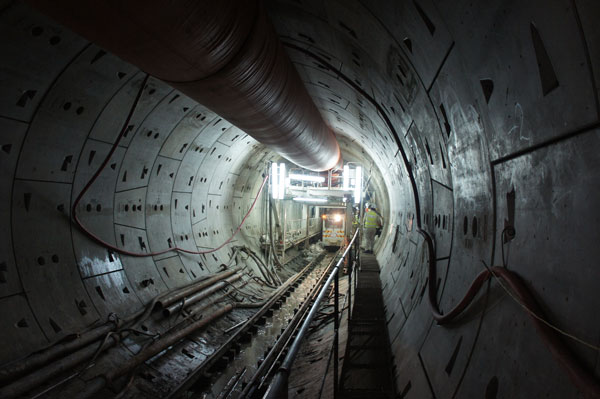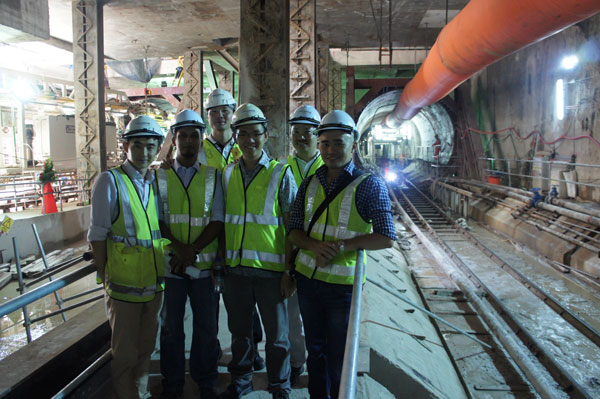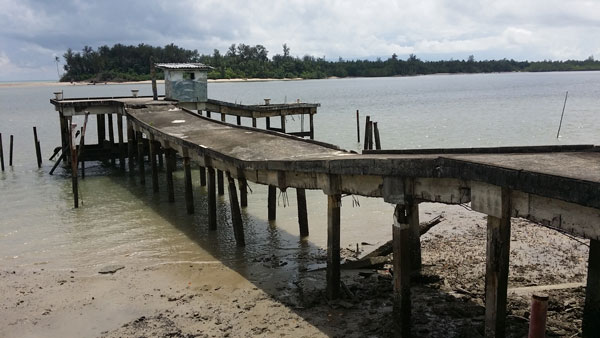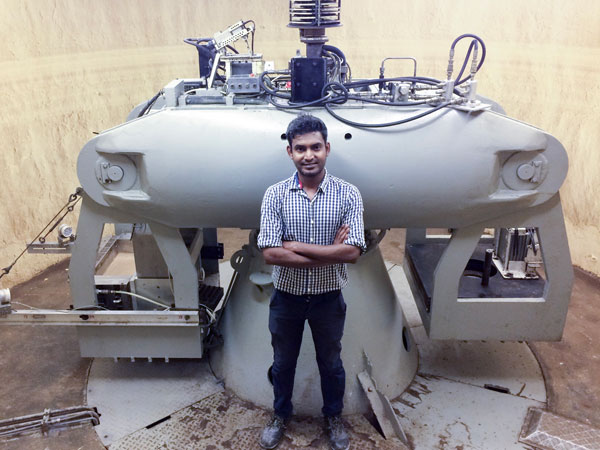Universities are places of transition; where students can freely explore and question the world around them. This is especially true of science and engineering where they learn how processes work and how those processes can be manipulated or harnessed. This is where one of the fundamental questions of research comes in. Should research be about discovery for its own sake or should it solve the most serious problems of the day. It is the dream of every research university to do blue sky research where the fundamentals are really questioned and explored. This kind of research is curiosity driven where its applications are not clearly visible at the outset. Applied science on the other hand develops more practical solutions in technology or engineering.

The centrifuge will help in assessing damage to riverbank structures.
Both these groups are vital to maintain a healthy knowledge economy and being on the island of Borneo with a unique and fragile eco-system, blue sky research is particularly vital. Here at Swinburne we found a specific probiotic microbe which curbs CO² emission. The impact is far reaching and goes beyond our borders. But research also needs support; both financial and from the global scientific community. Applied science is often successful in garnering industry engagement as it is more goal oriented.
Our Centre of Sustainable Technologies has shown the way for academia to engage with the industry. The Centre brings together expertise from different disciples with an intended outcome. They have been successful in solving engineering issues in Sarawak and paving the way for green construction. Their green cement and bio-pavers can be sustainably produced and use Sarawak’s strengths and industrial by-products. Our partners for the projects are Swinburne Melbourne and a French company Bachy Soletanche. It has become common practice for the research and development arm of industries to tie up with universities.

The geotechnical team at Swinburne Sarawak with KVMRT engineers.
Governments have been thinking long-term and strategically. For them it is not just about the knowledge but also how “engaged” is the knowledge; how it involves and benefits the community around us. The Federal government has now recognised our contribution to the corpus of engineering research and has given is a significant grant to invest in our hardware. But its not just any hardware; it’s a geotechnical centrifuge. A machine as big as a private jet and to house it we will need to modify our building.
Sarawak is long known as being the land of hornbills and orangutans. It’s one of a kind. But its uniqueness doesn’t stop on the lands surface. Dig deep and the all the engineers will gather round because of its geology; its neither sand nor rock. It’s a weathered rock-soil which fractures as soon as you dig to construct something. This brittle property is what causes wonder and is a challenge to build on. Construction companies have had the philosophy of “prepare for the worst, and hope for the best.” This means that they have been going in with maximum strength and preparation for a situation which might only require half or less. The Centre’s success in setting up industry engagement has largely been on research on effective civil engineering in Sarawak’s geology.
The centrifuge is how engineering research in Sarawak can raise the bar and become a major knowledge centre in the whole of the ASEAN region. Swinburne would be the only university or institution to have the latest centrifuge in whole ASEAN region. But what does this machine do?

The centrifuge will help in assessing damage to riverbank structures.
This machine replicates the stress conditions of the real world in the lab. Rather the phenomena of geology which is vital when constructing in a challenging environment. To put it very simply for a very sophisticated machine; it can magnify gravity and measure its effects. So in ten hours the machine would show you how a bridge would hold in ten years because of the effects of water and soil. The small model of the bridge is made and held by the robotic arm of the machine which is an astounding piece of machinery. We could for instance set up a model of a hydropower dam inside the centrifuge, and we can study the effect of the construction and performance of the dam to the geology and the other way around. It can also simulate an earthquake to see how the soil type responds to a natural disaster and from that data we can design our structures better.
But no knowledge or research exists in isolation. After all real innovation means that we have studied the previous corpus of knowledge and then built upon it. When our state government supported Swinburne research in 2012 by giving us a significant grant, we invested it in people. After all it’s the people who matter in research. National University of Singapore is the only institution in the region with the know-how and we have been sending our students there to work on their centrifuge. The research carried out would be of vital interest to our other industry partner JKR research or the public works department. We will continue to collaborate with them with our new centrifuge, as Steve Jobs said “Great things in business are never done by one person, they’re done by a team of people.” With this, engineering research and construction can be brought down to an exact science no matter how challenging the geology is.
By Associate Prof Wallace Wong, Director of Research, Consultancy and Future Projects, Swinburne University of Technology Sarawak Campus.


